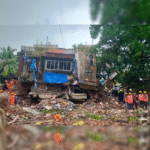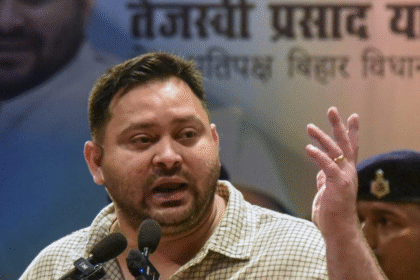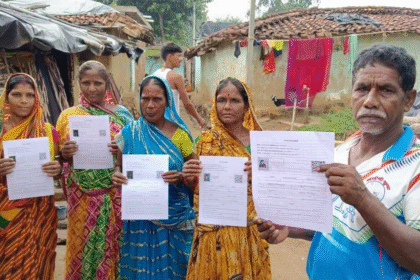Nitesh Rane Confirms Redevelopment Suggestions Accepted for Crawford Fish Market Project
Mumbai, India’s financial and cultural hub, is a city of contrasts, where colonial heritage coexists with modern infrastructure. Among its most iconic landmarks stands Crawford Market—now officially known as Mahatma Jyotiba Phule Mandai—a bustling epicenter of trade and culture, built in 1869 during British rule. Nestled near the historic Chhatrapati Shivaji Maharaj Terminus, this market has long been a symbol of Mumbai’s vibrant marketplace tradition. One of its integral parts is the Crawford Fish Market, a space that caters to thousands of Mumbaikars daily. However, age and urban pressure have taken their toll on this legacy structure.
Amid growing concerns about the deteriorating condition of the market and its surrounding facilities, the Maharashtra government, through the Ports and Fisheries Development Ministry, has pushed for an ambitious redevelopment plan. At the helm of this initiative is Nitesh Rane, the Ports Development Minister, who recently held consultations with various stakeholders—including local vendors, civic officials, architects, and heritage conservationists.
Community Engagement and Ministerial Response
What sets this redevelopment proposal apart from past initiatives is its emphasis on inclusive planning. In a recent press briefing, Nitesh Rane confirmed that suggestions and concerns raised by the community and market stakeholders had not only been documented but accepted. “We discussed their suggestions and changes. We want to ensure that the redevelopment is not just structural but also reflects the needs of the people who rely on this space,” said Rane.
The minister’s statement marks a notable shift in the state’s urban policy—one that actively incorporates citizen feedback into the project blueprint. Stakeholders advocated for improved sanitation, structural safety, waste management systems, and designated zones that preserve the market’s unique character while allowing for modern upgrades.
The redevelopment plan aims to balance historical preservation with smart urban planning. Initial architectural drafts indicate a design that maintains the iconic Gothic and Norman elements of the market’s original façade while revamping internal infrastructure with energy-efficient materials, proper ventilation, and clearly marked vendor zones to improve pedestrian flow.
By establishing an open forum for traders, residents, and conservation experts, the minister signaled a collaborative approach. Local representatives expressed cautious optimism, praising the administration’s willingness to listen but also emphasizing the need for sustained dialogue as redevelopment progresses.
The Crawford Fish Market redevelopment project is not merely a restoration task—it is an exercise in architectural diplomacy. On one hand, authorities must ensure safety, hygiene, and commercial viability; on the other, they must honor the soul of a site that dates back more than 150 years. The architects involved have undertaken detailed surveys, capturing every heritage feature, and coordinating with the Mumbai Heritage Conservation Committee (MHCC) to ensure compliance.
A key element of the plan includes seismic retrofitting of the existing structure to enhance resilience without altering its iconic visual identity. The sloping tiled roofs, ornate cast-iron supports, and arched doorways will remain untouched externally, while interiors will be reconstructed using durable, sustainable materials like fly ash bricks and recycled steel. Special care is being taken to ensure that the market retains its open-air feel, which is central to its identity and operational style.
In terms of layout, the new design proposes reorganized fish stalls with integrated drainage and water management systems to meet both environmental standards and occupational safety. There will be designated spaces for cleaning, waste segregation, and transport loading to streamline operations and reduce congestion—a frequent complaint from both vendors and shoppers.
Additionally, spaces will be carved out for cultural exhibits and photo galleries chronicling the market’s historical evolution, ensuring that the legacy of Crawford Fish Market is not buried beneath modern concrete but celebrated within it. This is in line with the larger push by urban planners and policy experts to blend heritage with utility—making heritage liveable and functional rather than static and ceremonial.
Economic Revitalization and Vendor Sustainability
Beyond the architectural and heritage aspects, the Crawford Fish Market redevelopment aims to act as an economic catalyst for the local trading community. With over 500 vendors operating within the market precinct—many of whom belong to generational business families—the project presents both a risk and an opportunity. Displacement during redevelopment has historically resulted in economic stagnation for small traders, but the state government is keen to prevent that outcome this time.
To address these concerns, Ports Development Minister Nitesh Rane confirmed that a phased construction plan would be implemented to ensure vendors could continue operating in temporary zones created nearby. These interim facilities will be equipped with basic utilities, safety mechanisms, and sanitation services—reflecting a conscious effort to support livelihoods even as the market undergoes a structural overhaul.
Moreover, the redevelopment blueprint includes dedicated micro-loan access through cooperative banks to assist traders in upgrading their stalls post-renovation. The state has also proposed workshops on digital payment systems, packaging innovations, and compliance with food safety norms to ensure that vendors are not only retained but also economically empowered. For women vendors in particular—who constitute nearly 40% of the fish traders—the new plan introduces childcare zones, restrooms, and women-led cooperative support systems.
In addition, a digitized stall allocation system is expected to be introduced. This would provide transparency in space distribution, help prevent corruption, and ensure that original vendors are not sidelined by larger commercial players after redevelopment. The government has also emphasized vendor ID verification and biometric documentation to formalize vendor recognition and safeguard their right to return post-renovation.
Stakeholder committees, composed of local market representatives and urban policy experts, will oversee the transition phases and ensure accountability. Their responsibilities will include monitoring temporary stall conditions, overseeing financial aid distribution, and reporting redevelopment progress. This bottom-up governance model, while still evolving, represents a marked shift from the top-down approach often criticized in previous urban renewal efforts.
The hope is that by embedding economic resilience into the DNA of the redevelopment, the Crawford Fish Market will emerge not only as a restored heritage site but also as a sustainable commercial ecosystem—resilient to market volatility, empowered through inclusive policy, and dignified in its preservation of culture and commerce.
Also Read : Israel Reportedly Strikes Bedouin Convoy in Syria Following Cross-Border Attacks







